An Accurate, Timely Diagnosis Is the Key to Effective Treatment
Our diagnostic methods help us uncover the causes behind our patients’ symptoms.
An Accurate, Timely Diagnosis Is the Key to Effective Treatment
Nuestra metodología de diagnóstico no ayuda a definit las causas de los síntomas que padecen nuestros clientes.

CONSULTATIONS
Your visit begins with anthropometric measurements (weight, height, abdominal circumference, and BMI) along with physiological measurements such as blood pressure, heart rate, respiratory rate, oxygen saturation, and a spirometry test to assess lung function. These measurements give us a clear picture of your overall health and help us establish a more precise clinical diagnosis. Afterward, we perform a detailed allergy-focused medical history and a targeted physical exam to determine a preliminary diagnosis.
BLOOD TESTING SANGRE
The ImmunoCAP technique is the most advanced and accurate test to identify the source of diseases suspected to have an allergic origin. It measures the allergy antibody IgE in the blood—both total IgE and specific IgE for different allergens. By analyzing these levels, we can identify which environmental or food proteins are triggering allergic inflammation in the patient.
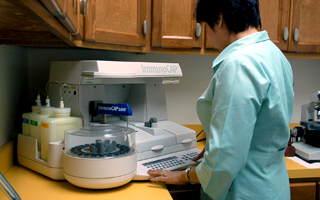

SKIN ALLERGY TESTING
Skin allergy testing has been a trusted method for over 100 years to determine sensitivity to environmental allergens. It’s easy to perform, delivers immediate results, and allows multiple allergens to be tested at once. The most widely used method is the prick test, where a multi‑applicator device makes tiny punctures on the skin and applies small amounts of various allergens (pollen, dust, mold, mites, foods). We then observe and measure the inflammatory reaction at each site.
PULMONARY FUNCTION TESTING
These computerized diagnostic studies are essential for evaluating lung function. They detect and classify abnormalities in how the airways work by measuring lung capacity and airflow. Pulmonary function tests are vital for diagnosing and classifying: - Asthma and its severity - Lung damage from smoking - COPD - Pulmonary emphysema …and any other lung condition.
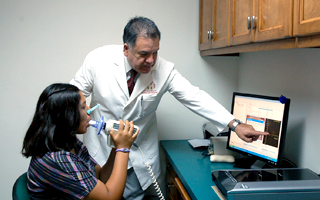
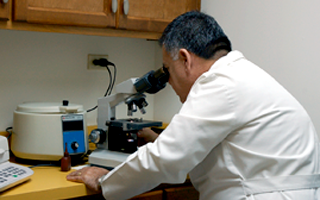
NASAL CYTOLOGY
This test studies the mucosa inside your nose. A small sample is collected using a specially designed tool (Rhino Probe), stained with special dyes, and analyzed under a microscope. It helps determine the cause of rhinitis (nasal mucosa inflammation)—whether allergic, non‑allergic, or infectious—and distinguish viral from bacterial rhinitis. It also identifies the types of cells present and allows us to track how the disease and treatment are progressing.
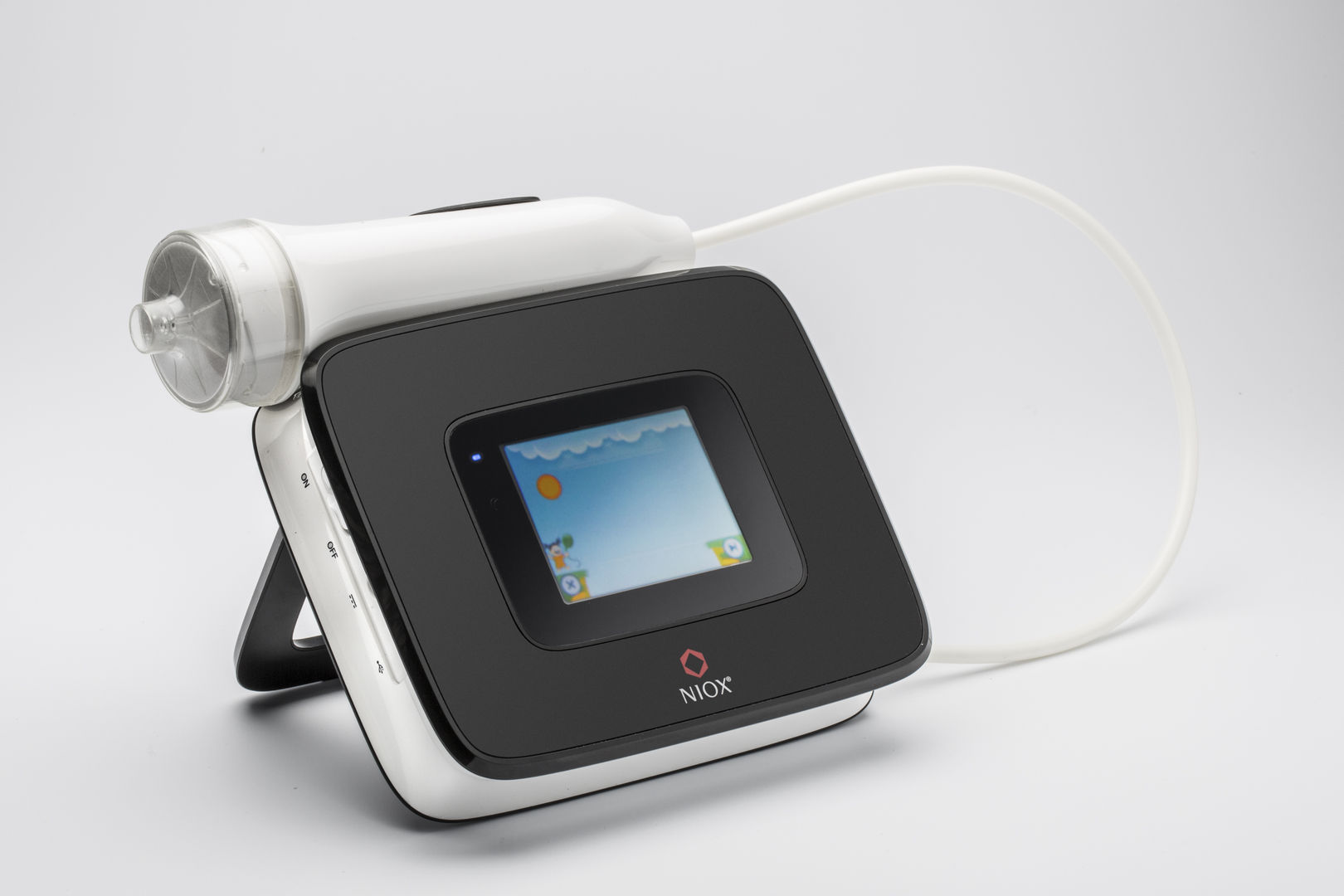
EXHALED NITRIC OXIDE (FeNO)
This test measures a marker in the air you exhale from your lungs. It’s currently the most useful non‑invasive method to detect allergic lung inflammation. It’s quick, easy to perform, and extremely valuable for diagnosing and monitoring asthma patients.
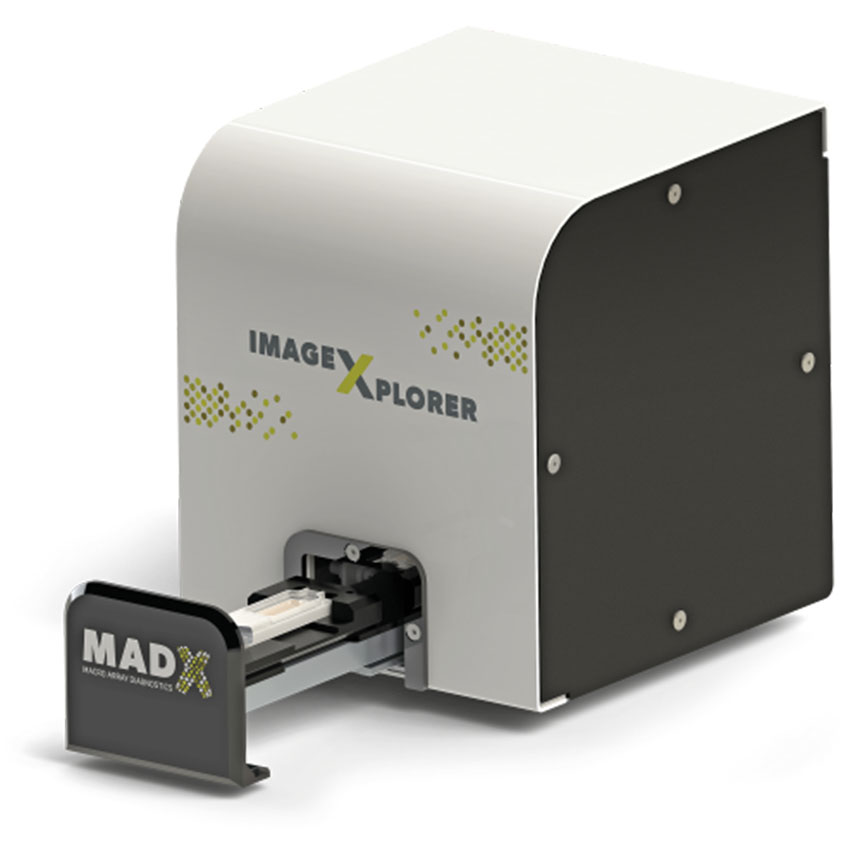
MOLECULAR DIAGNOSIS
A revolution in allergy diagnostics: ALEX² tests nearly 300 allergens in one run.
- All‑in‑one matrix
- Measures both total IgE (tIgE) and specific IgE (sIgE)
- The widest range of molecular allergens available
BENEFITS
- • Covers almost 100% of all clinically relevant allergens worldwide in a single test
- • Provides a complete picture of the patient’s sensitization profile
- • No need to search through allergen databases
- • Enables truly individualized therapy options
ALLERGEN PANEL
- • ELISA‑based multiplex IgE assay
- • 117 extracts and 178 molecular allergens
- • Over 50 unique molecular allergens
- • Total IgE included
CCD-FREE DETECTION
- • Non‑specific IgE antibodies to cross‑reactive carbohydrate determinants (CCDs) are automatically blocked
- • Higher specificity, less interpretation complexity
TECHNOLOGY
- • Nanobead technology
- • Choose from 15 predefined allergen panels (grouped by allergen types)
- • Or design your own allergen panel with on‑demand multiplexing
Av. Madero No. 1053
Mexicali BC, CP 21100, México
(686) 554-0506
(686) 554-0522
Office Hours:
Mon - Fri 9 AM - 2 PM and 5 PM - 8 PM
Sat 10 AM - 2 PM
All rights reserved. Asthma and Allergy Clinic. Copyright © 2024.
